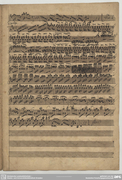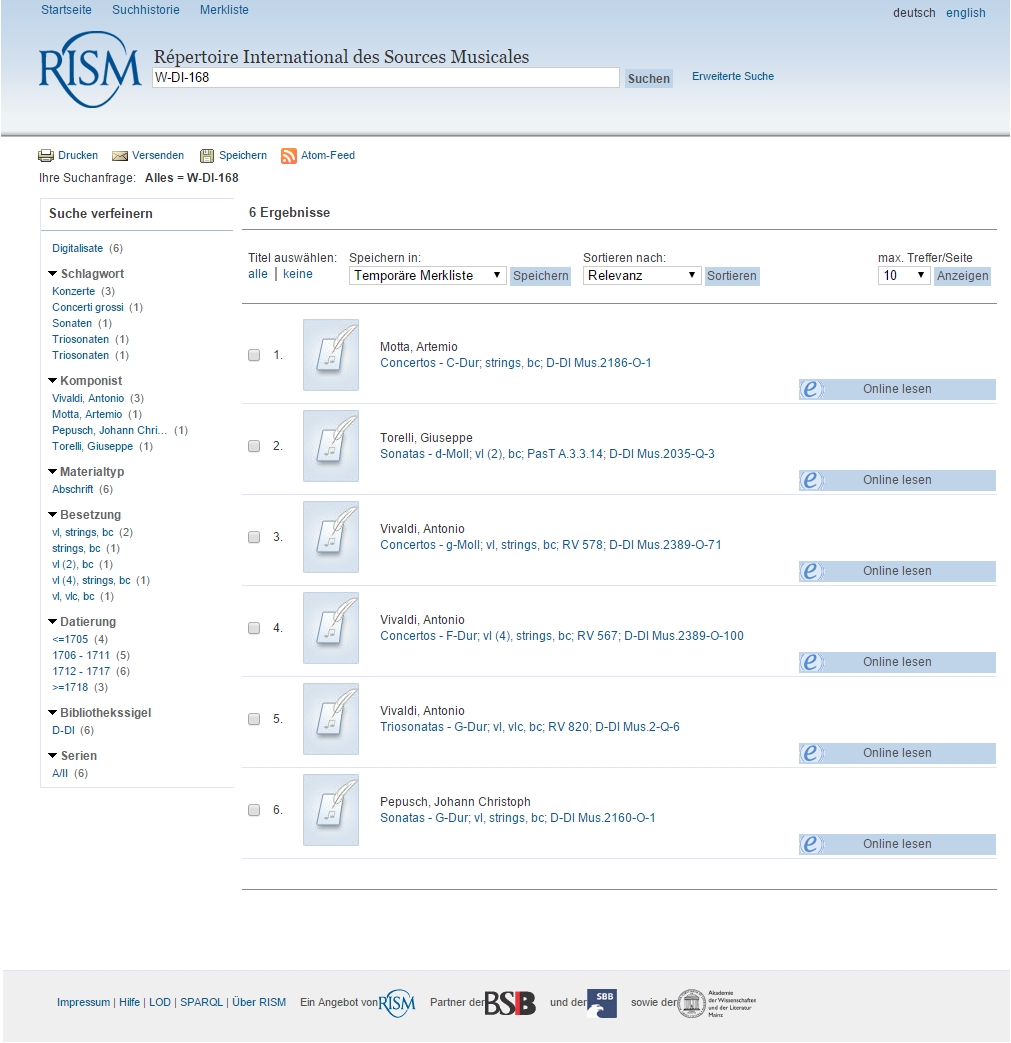New Discoveries of Vivaldi in Dresden
Francisco Javier Lupiáñez Ruiz
Thursday, October 8, 2015

The following is a guest post by Francisco Javier Lupiáñez Ruiz:
Two years ago I started to prepare a concert program based on anonymous pieces from the Schrank II collection from Die Sächsische Landesbibliothek – Staats- und Universitätsbibliothek Dresden (SLUB). The Schrank II contains a large collection of musical works compiled by the Concertmaster Johann Georg Pisendel during the first half of the eighteenth century. The close relationship between Pisendel and Vivaldi makes the Schrank II a great reservoir of Vivaldi’s music and a source of new musical discoveries.
While preparing my “Anonymous program” a Sonata in A major for violin and continuo (RISM no. 212001952) caught my attention because of its ostensible proximity to Vivaldi’s music. Although the piece was familiar to me, it was cataloged as having an anonymous composer in RISM and it was not mentioned in the recent additions of the Vivaldi catalog. Eventually I identified the first movement of the anonymous sonata as a version of the second movement of the Vivaldi violin concerto RV 205 (RISM no. 212000134).
After this discovery I returned to the preparation of my anonymous program. A different piece, a trio sonata for violin, violoncello and basso continuo (RISM no. 212002034) attracted my attention. I performed this sonata for my former teacher Mr. Enrico Gatti and he was the first to notice that the Gigue contained in this trio sonata was almost identical to the Gigue contained in Vivaldi’s Dresden sonata for violin and continuo RV 10 (RISM no. 212001817).
These works are unsigned, and the mere similarity with Vivaldi’s music was not enough to prove its authorship, meaning further research was needed. In carrying out this research, I found another anonymous piece with strong links to Vivaldi. The Cadenza of the Concerto for violin and orchestra in D Major found in the manuscript Mus.2-O-1,45 (RISM no. 212003601) was very similar to Vivaldi’s cadenzas found in RV 212/RV 205 (RISM no. 212000137) and in RV 562 (RISM no. 212000216). In addition, I found the sentence “qui se ferma a piacimento” in the tutti parts. This sentence is strongly linked to Vivaldi and was of pivotal importance in a recent discussion concerning another Vivaldi concerto found in Dresden (RISM no. 212003586).
After these preliminary discoveries, I began to elaborate my thesis and to compile the necessary proof to support the possibility of Vivaldi’s authorship of the pieces in question. In light of the results, the Vivaldian attribution is consistent in all the pieces.
The tools and information provided by RISM were of great help in the study of each source. Information about the copyist, the watermark, the format of the paper, the incipits, and other useful information can easily be found in the RISM online catalog.
The following example is taken from RV 820 in the RISM online catalog:
The information given by RISM is of high value and is easily accessible. Thanks to the watermark, date and other information, we can put this manuscript into context. This sonata in particular was copied by Johan Georg Pisendel before he arrived to Dresden, probably during his studies with Torelli in Ansbach (from 1697 to 1712), and Pisendel brought this manuscript with him to Dresden. It is also possible to find other manuscripts with the same watermark using the search box in the RISM online catalog and to find other manuscripts copied by Pisendel and brought to Dresden in the same period. The links between Torelli (supposed teacher of Vivaldi), Pisendel and Vivaldi become clearer just after this short search:

There are still more than sixty sonatas for violin and continuo, approximately twelve string trio sonatas, and more than fifty concertos that remain anonymous in Schrank II; most of them are available online and linked in RISM. The tools developed by the SLUB and RISM will serve as an essential catalyst for new discoveries and will help, among other things, to put a name to other unsigned manuscripts.
Image credit: Sächsische Landesbibliothek - Staats- und Universitätsbibliothek Dresden, Cadenza from the Concerto Mus.2-O-1,45
Share Tweet EmailCatégorie: Redécourvertes

